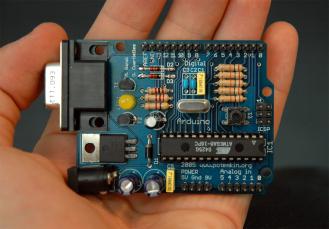User + control
Traditionally, many of us have been consumers of technology. The products are made and programmed by someone else, and we buy them and consume them as they are. But, as our demands on technology increase, and as the power of that technology also increases, we are more and more given the opportunity to customise those tools to meet our needs. An example might be a newspaper website. Traditionally, papers were printed with the same content on the same page for every reader. Right? It was too difficult to put people’s favourite kinds of stories on the front page of their newspaper. But a website’s different. Most newspaper websites will allow you to say, “I want world news at the top of the page, then entertainment, then sport”, and every time you go to that site, it remembers your preferences. That’s a very simple example of the user being in control.
Drivers for this trend
- Social: Demand for programming experience from business world; a desire to shape our tools rather than let them shape us.
- Technology: ‘hacking’ and ‘modifying’ of existing programs and devices using user-friendly interfaces; increasing potential for personalisation and customisation.
- Educational: Career options for students; motivation, engagement; co-construction.
Programme or be programmed

Douglas Rushkoff said "programme or be programmed." And technology is increasingly allowing us to programme the tools around us. You can go to websites like Codecademy or Codeyear and learn to program using self-paced activities. Even little toys like Little Bits allow kids to put colourful magnetic blocks together to make things. Each block contains some tiny electronics and by snapping them together you can make fun things that do stuff. I’ve given a bunch of these to 3-year-olds and watch them put together a power source, a button and a buzzer. Bingo, they’ve made a doorbell. Or, a light sensor and a little LED. As it gets darker, the LED gets brighter. These kids have built a nightlight. What’s happening is these kids are learning as they play, and they are creating solutions to problems that exist in their world.
Learning, self-esteem and satisfaction
So there’s no programming required with little bits, but there’s a real trend towards fun, hackable microcontrollers like the Arduino and the Digispark, which are essentially small programmable computers. I’ve seen 12-year-olds put some of these together with parts from solar garden lights to create a mobile phone charger that rotates to follow the sun as it moves through the sky. Probably $30 worth of parts, and about 20 lines of programming code, and huge amounts of learning, self-esteem, and satisfaction. Or build a smartphone app. Go to MIT’s App Inventer and make an app that uses GPS, the phone's camera and text messaging. It’s all drag and drop, and surprisingly easy.
Communities of practice
Around this trend of user and control, communities are springing up, often around shared maker spaces. Places kitted out with a bunch of tools where people can come, learn, and make things. The logic is that if the tools are shared. None of us need own all of them, and more importantly someone will be able to show you how to safely use them to complete a project. What’s happening is that communities of practice are springing up around these places, sharing knowledge, getting stuff done. And what’s a school if it’s not a well-equipped community of practice. There’s a great opportunity to be the centre of our community when it comes to brokering access to tools, opportunities to learn, and expertise. And given what we know about the importance of active, real-world learning, it is something we should be providing our students as often as we can.
Implications
- What are your beliefs about the importance of being digitally literate? How are these represented in your school programmes?
- What is happening in your school to cater for and encourage those students who have an interest in computer programming?
- What opportunities do students have to create new knowledge (and things) as well as use the existing?
Not just passive consumers
So, user and control is about being more than a passive consumer of things in your world; it’s about customising the objects around you to make sure they solve your problems rather than just waiting for someone to bring out a perfect piece of consumer electronics that meets our need. It’s also about learning a whole lot along the way.
As Marshall McLuhan said ‘First we shape our tools, thereafter our tools shape us.’
Learn, participate, and share
CORE staff are using Bundlr to collate links to articles and information relating to User + Control in a Bundlr collection. There is the option for you to choose to follow the growing collection over the next few months.